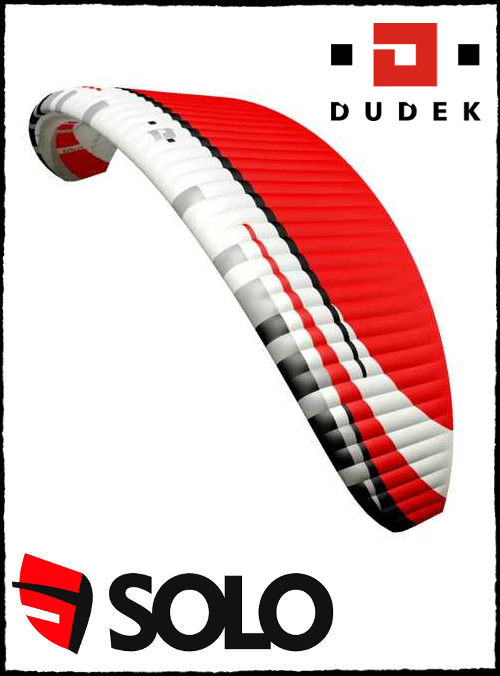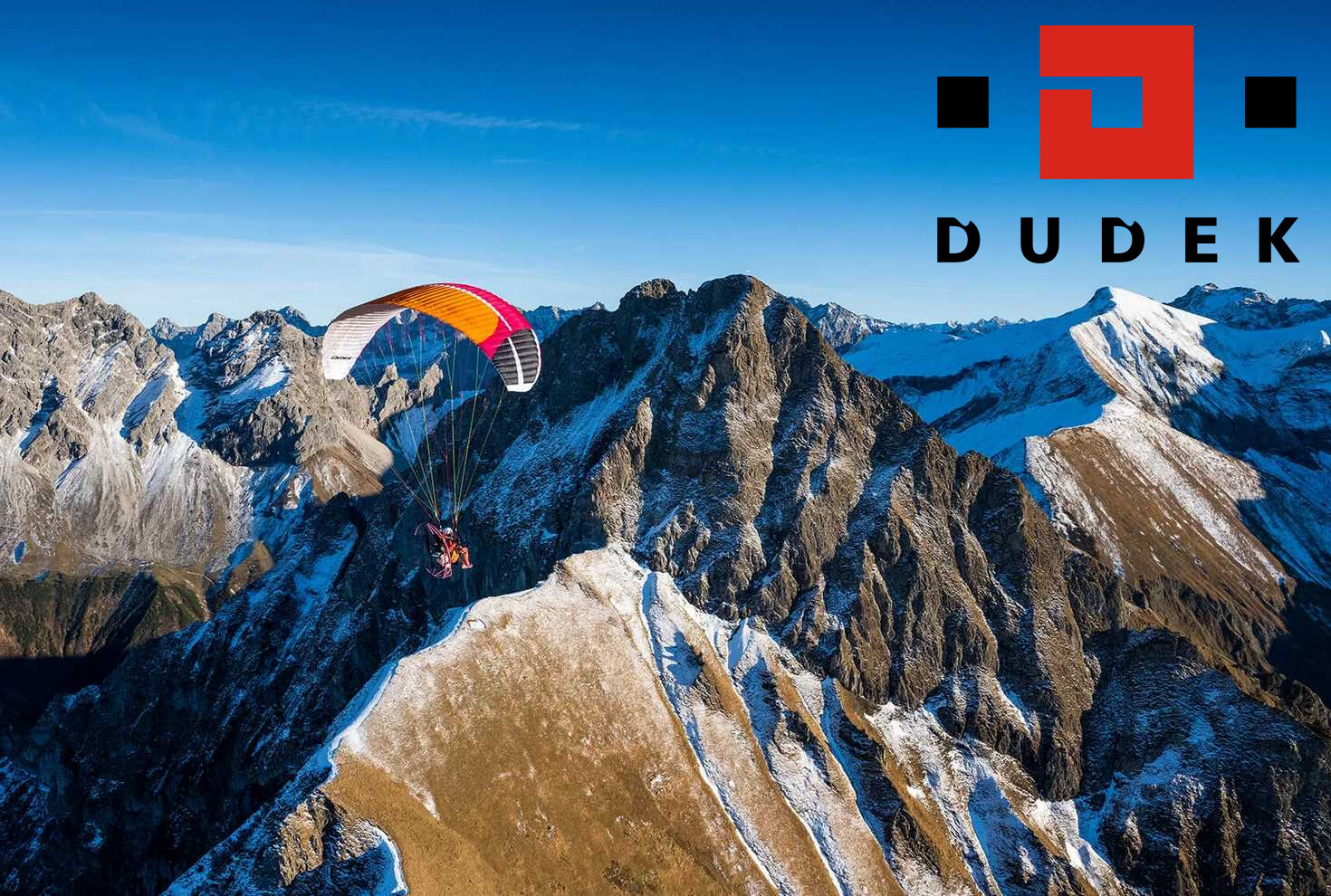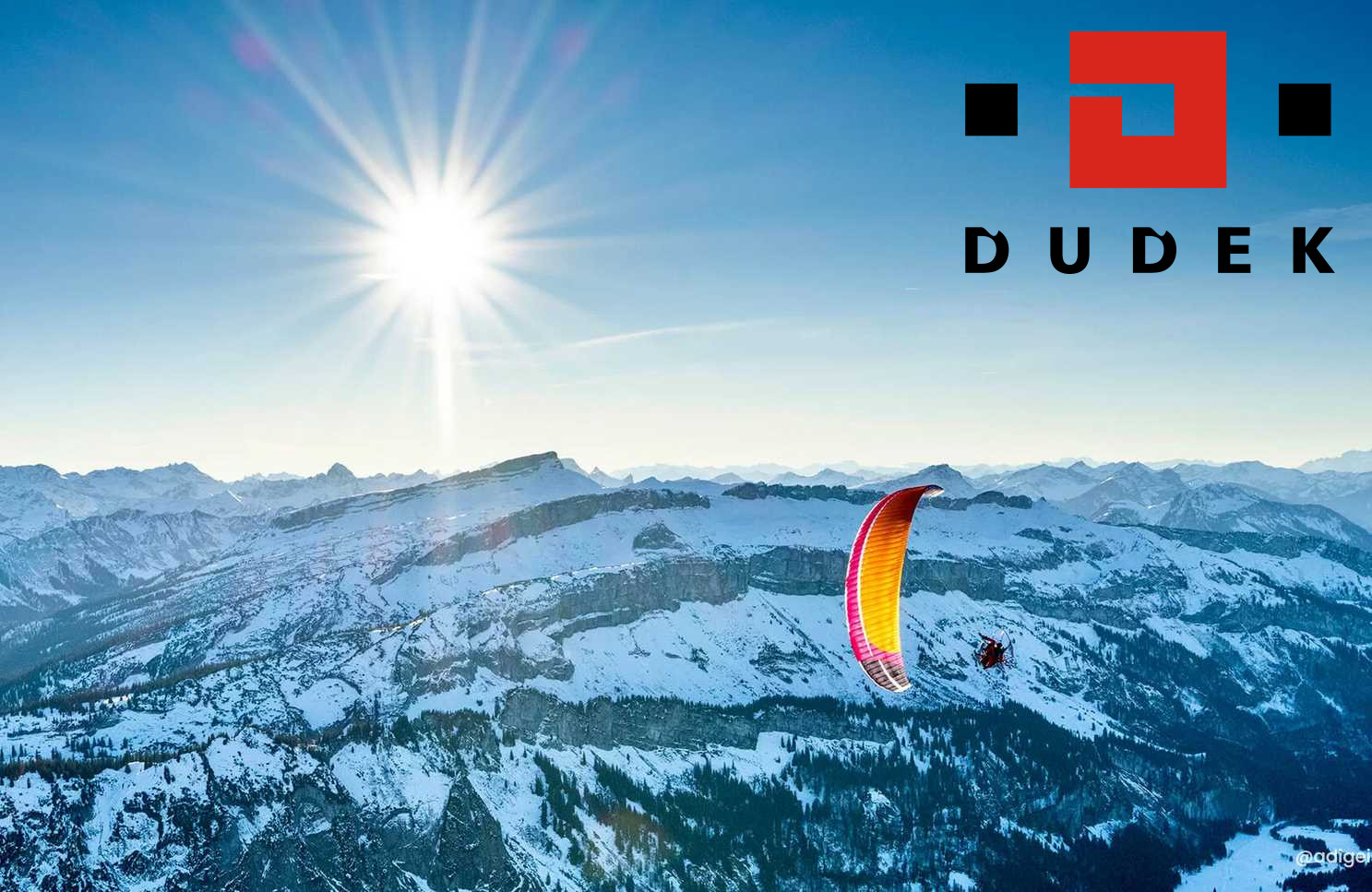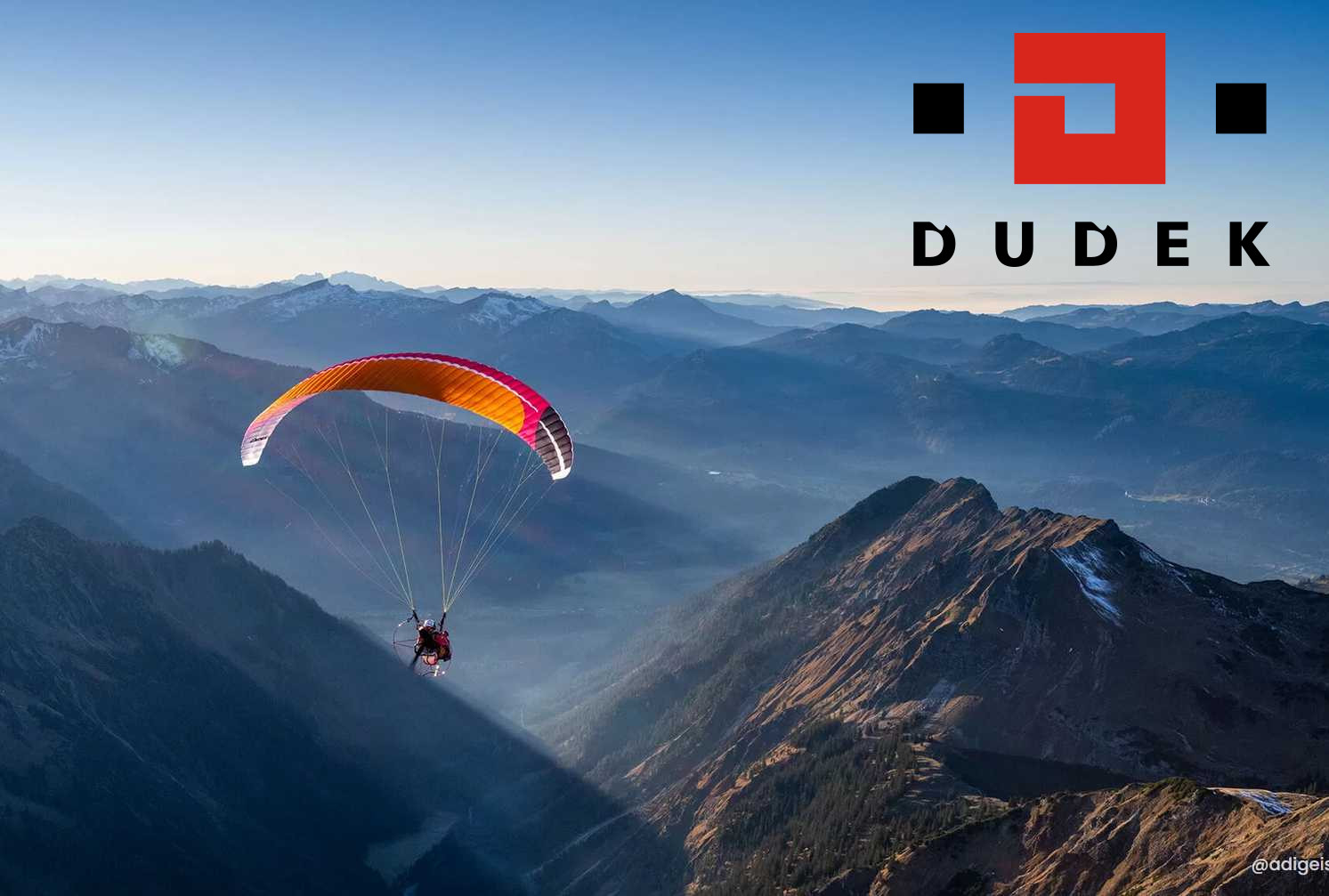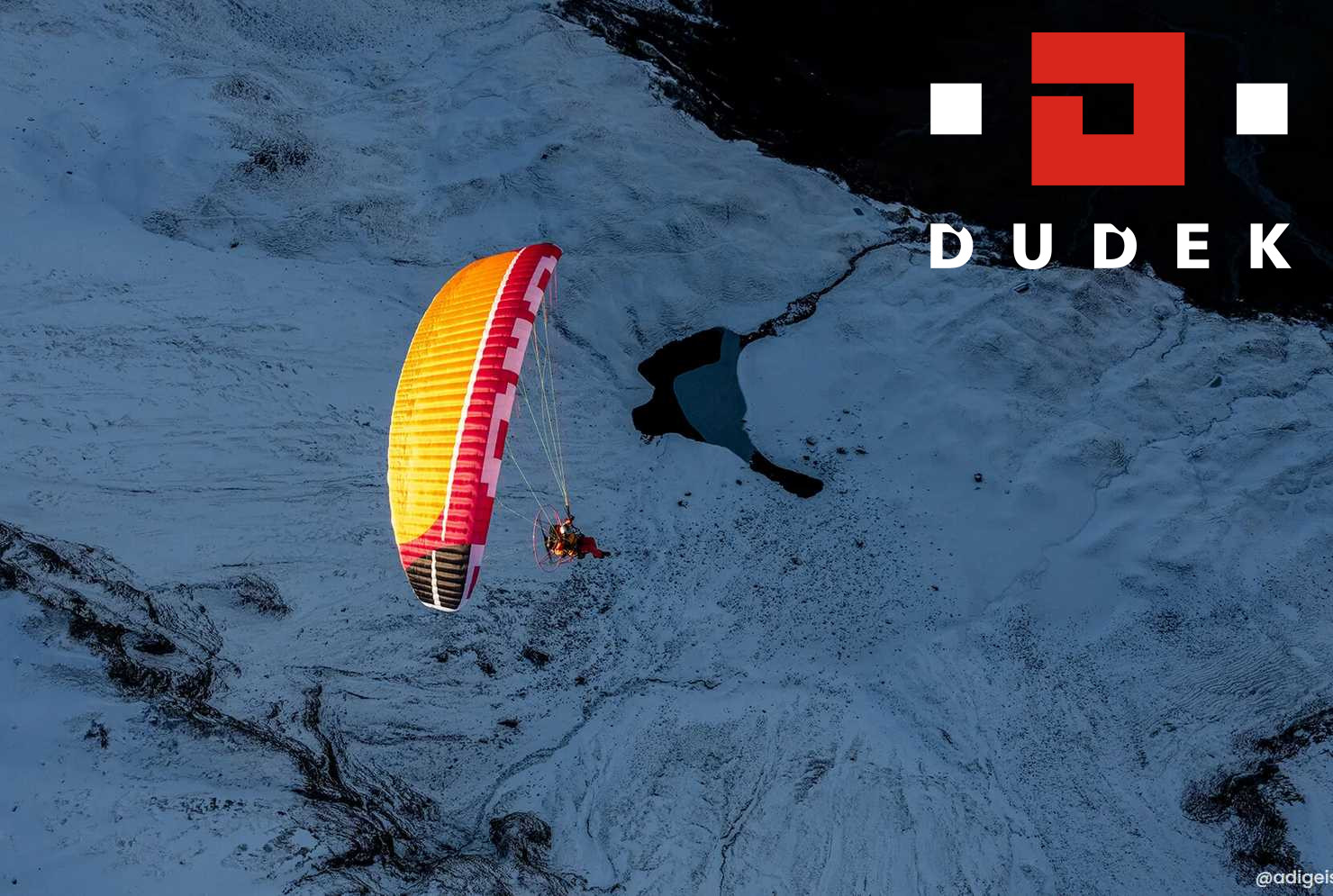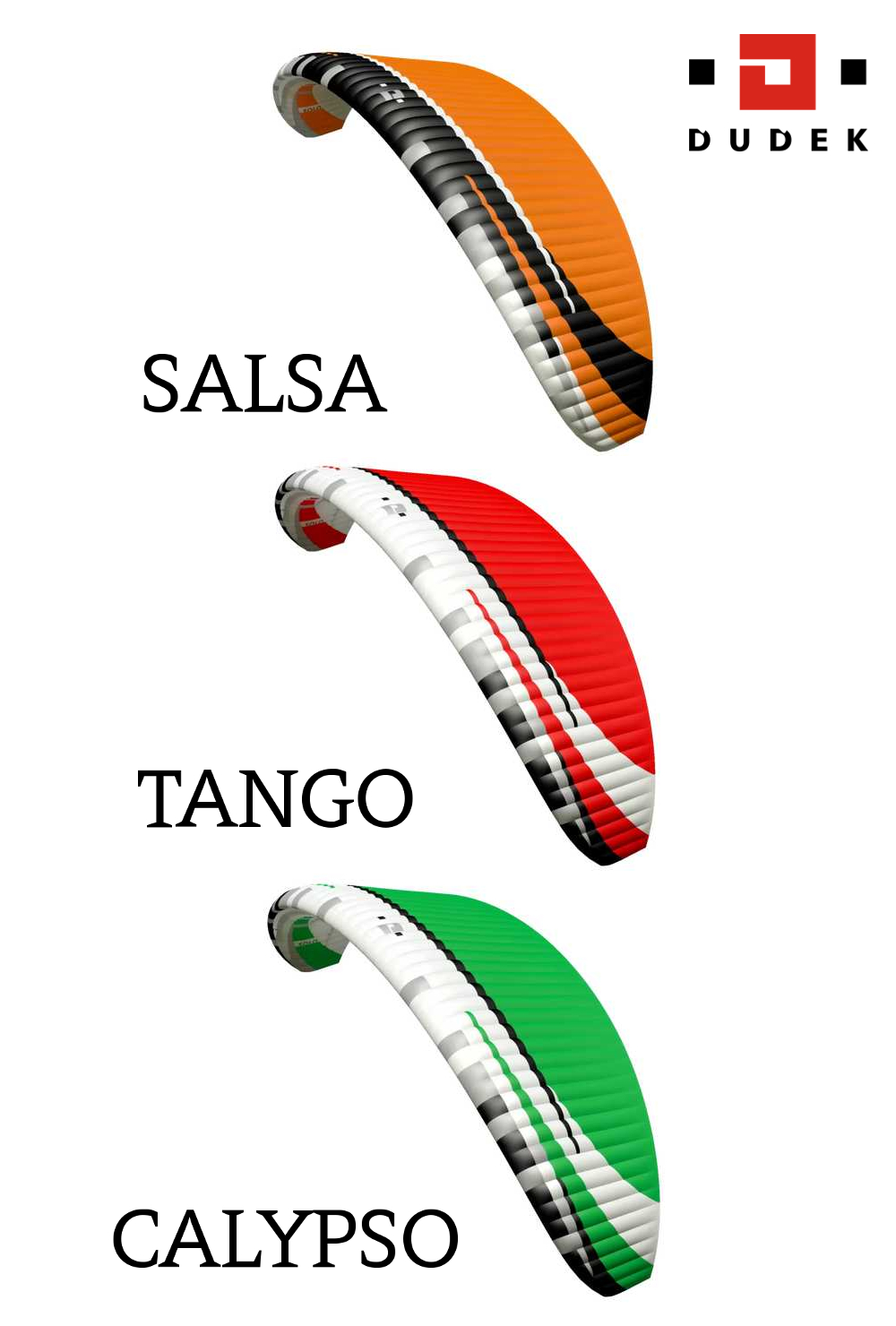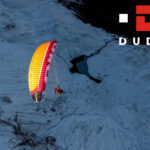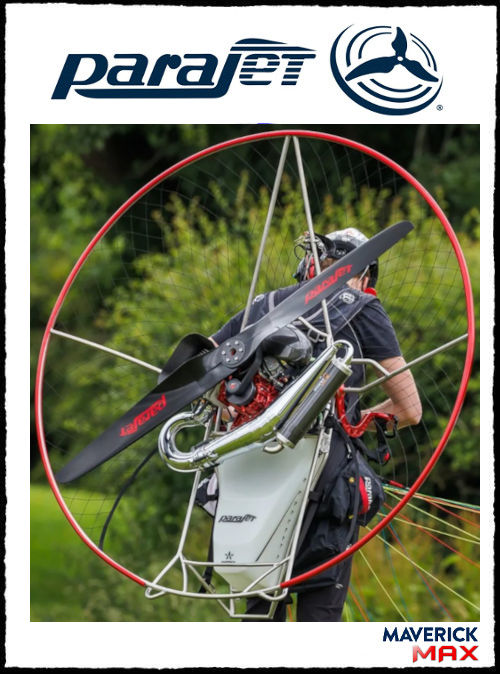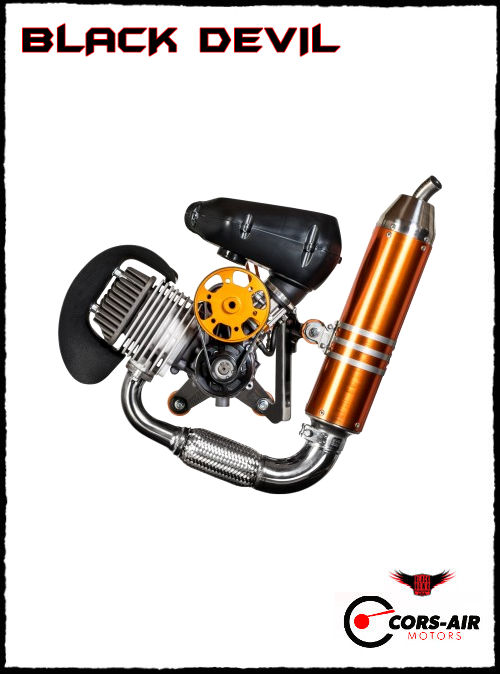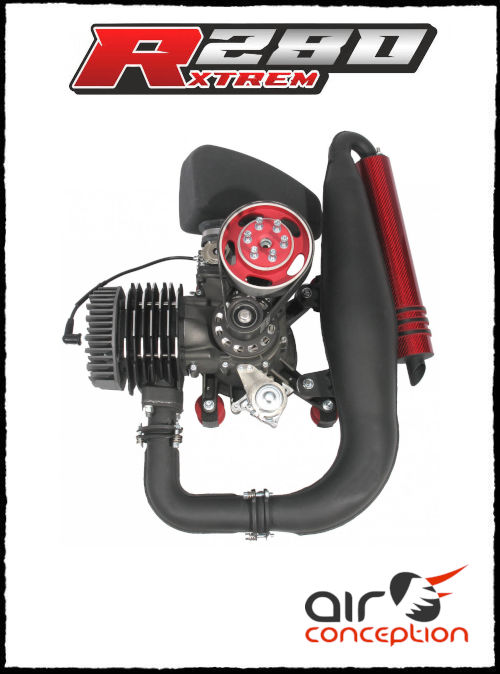The Dudek Solo Paraglider is stable with good lift. Looks good at moderate speeds, but equally efficiently moves forward when you need to accelerate. The elements of reflex and Shark Nose protect your safety, while the general flight characteristics and light controls make for effective use of encountered lift.
Dudek Solo Paraglider
$3,800.00
Want to Learn More About The Dudek Solo?
Description
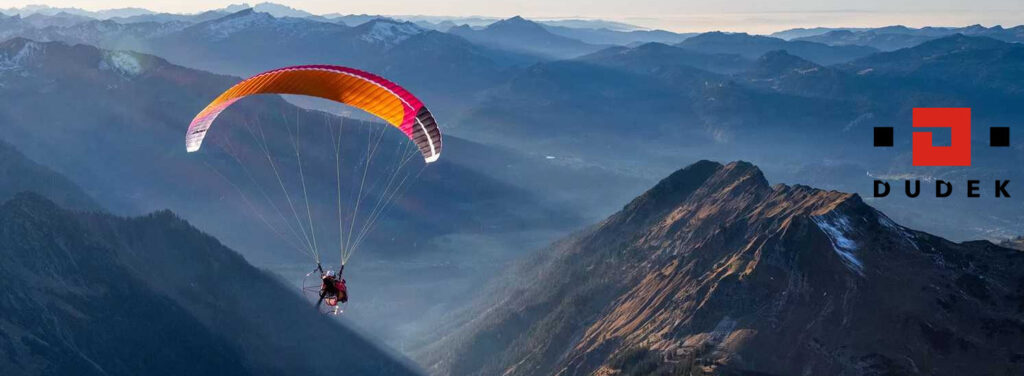
The “SOLO” by Dudek Paragliders:
FROM THE MANUFACTURER: “Both the design and advantages have evolved from the renowned tandem trike wing – the Cabrio. Solo offers a coherent & stable canopy, creating quite a lot of lift. All parameters have been selected to maintain the right proportions of passive safety, performance, and ease & precision of steering. It will meet the expectations of both recreational and XC pilots. Solo provides security of the typical B-category wings level.
START: During the start, Solo fills and gets up willingly, with no tendency to lag or overtake. The entire launch takes place over a relatively short distance, at low speeds. The use of launch-assisting tapes is usually not necessary. We recommend starting with the trimmers fully engaged.
FLIGHT: Solo is stable with good lift. Looks good at moderate speeds, but equally efficiently moves forward when you need to accelerate. The elements of reflex and Shark Nose protect your safety, while the general flight chracteristics and light controls make for effective use of encountered lift.
Variable airfoil geometry, adjustable with trimmers, allows you to adjust the airfoil shape to the current flight profile and precisely control the flight speed.
Solo features a dual control system. The main steering lines work similarly to the classic wings and can be used throughout the full range of the trimmer. Small TST handles are used mainly in accelerated flight (open trimmers). Such a system makes it easier for the pilot to control and increases the efficiency of making turns without putting much effort in it.
In turbulence, the wing behaves predictably and confidently, efficiently suppressing both lateral and front-rear swings.
LANDING: During landing approach, a relatively small pullon the brakes is enough to significantly reduce the speed and land gently.
SOLO VS. OTHER DUDEK GLIDERS: The question arises about the differences between Solo and similar wings in this segment – the Universal 1.1 or the no longer produced Synthesis 2. In a nutshell, it can be said that Solo is a little more advanced when it comes to flight parameters due to its slightly greater aspect ratio (5.4, as compared to 5.1 in Universal and Synthesis), yet at the same time it is easier to use. However, its “genes” come more from the Orca side, in particular the Cabrio, a fact emphasized by the same graphic design (with a modified color system).
Careful selection of modern fabrics and design solutions brings about maximum reliability, strength and durability. All materials come from numbered production batches, and each production step can be verified down to identification of specific worker and controller.
The Solo is manufactured in technology utilizing precision of the laser cutter. All stages of production process take place in Poland under strict supervision of the designer himself, thus ensuring highest European quality.
LEARN MORE ABOUT THIS GLIDER
INCLUDES:
- MotoBag backpack with DewBag
- Transport bag including compression strap
- pouch with documents and repair kit (self-adhesive cloth, spare line)
- wind ribbon and windsock
- small gifts
SPECS (from Dudek’s website):
| Name – Size |
Solo 21 | Solo 24 | Solo 27 |
| Approval – ULM identification | yes | yes | yes |
| Number of cells | 53 | 53 | 53 |
| Wing area flat [m2] | 21.00 | 24.00 | 27.00 |
| Wing area projected [m2] | 17.86 | 20.41 | 22.96 |
| Wingspan flat [m] | 10.65 | 11.38 | 12.07 |
| Wingspan projected [m] | 8.47 | 9.05 | 9.60 |
| Aspect ratio flat | 5.4 | ||
| Aspect ratio projected | 4.02 | ||
| Sink rate [m/s] | min = 1.2; (+/- 0.2 m/s) | ||
| Speed [km/h] | min = 23, trim = 39-50; max = 61 (+/- 3 km/h) | ||
| Canopy weight [kg] | 4.83 | 5.28 | 5.72 |
| Take-off weight [kg] | 60-100 | 80-130 | 100-160 |
| Max take-off weight – for experienced [kg] | 125 | 160 | 200 |
| Distance between risers [cm] | 45 | 45 | 45 |
| Load test [kg] | 511 kg at 5.25 G | ||
| Lines | A-8000U: 050 / Technora: 90; 140; 190; 280; 340 / Dyneema: 350 | ||
| Cloth | Porcher Sport 38 g/m2 Dominico Tex 34 g/m2 Porcher Hard Finish 40 g/m2 SR-Scrim, SR Laminate 180 g/m2 |
||
* Speeds are given as estimated for the middle wing size and the middle of its weight range. These speeds can vary within +/- 3 km / h depending on the size, take-off weight and additional factors such as air pressure and temperature.
** The basic rule is to choose the size of the wing so that the take-off weight is in the middle of the weight range. Less weight on the wing (lower range take-off weight) can be considered for foot take-off, when flying in calmer conditions, or when we want to improve economy. More experienced pilots who want to fly dynamically, have higher speed and fly in more demanding wind conditions can consider greater wing loading (take-off weight in the upper range). This is a common option among trike users.
*** Note – the canopy significantly changes its behavior with increasing wing loading. The greater the loads, the greater skill and concentration of the pilot are required.
COLOR OPTIONS:
(Click Images to Enlarge)

NEED HELP DECIDING THE CORRECT SIZE GLIDER?
CONTACT US: (833) PPG-FLYR
Additional information
| Select Size: | 21m², 24m², 27m² |
|---|---|
| Select Color: | ENERGY (Red-Black-Yellow), HARMONY (Blue-Green-Gray), PASSION (Pink-Orange-Black) |

